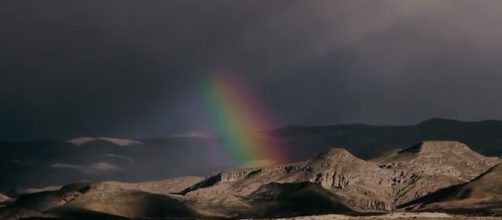Bolivia was once a poor and corrupt nation, but it is flourishing into one of the best value destinations in the world.
The small and landlocked country is brim-full of diversity, culture, and character and is well worth visiting.
Here are five reasons why Bolivia should be one destination at the top of your list to visit in 2018.
1. Bolivia is a place of extremes
Bolivia's landscapes are some of the most opposing in the world. Take the city of El Alto, which towers above the urban sprawl of La Paz. With over 1,000 metres difference the two climates contradict each other.
El Alto sits on the pancake-flat altiplano (Spanish for 'high plateau). The climate is harsh, with less oxygen, so trees fail to grow.
Venture down into La Paz however, and you will find a thriving city which is full of life. Or go further yet to the Amazon Jungle, where you can find over 20,0000 species of plants. There's something for everyone in Bolivia - except the sea (but hey, don't mention it! They lost it to Chile in 1879).
2. It's out of this world
Hollywood director Rian Johnson thought so. If you've seen the latest 'Star Wars: The Last Jedi' movie, you might find the ethereal-like landscape of Salar de Uyuni oddly familiar; it's where the scenes on the mineral planet Crait were filmed.
And you can see why. Standing on the vast, empty salt flats is enough to make you feel like you're on another planet. When it rains, you can see your reflection in the glistening whiteness. Pretty cool, huh?
Salar de Uyuni: The world’s largest salt flat located in Bolivia pic.twitter.com/6gNKHhtZip
— The Places You'll Go (@OTPYG) January 9, 2018
3. It's got some of the best restaurants in the world
Bolivia has established itself as a foodie destination, with a little help from Claus Meyer who also runs Noma in Denmark. Since setting up Michelin-starred Gustu in 2013, a flurry of fine-dining restaurants have opened in the capital of La Paz.
Gustu pays tribute to the Bolivian nation by using only local ingredients; which is why you won't find any fish on the menu but can eat trout sourced from Lake Titicaca.
The five-course tasting menu at Gustu will set you back around £39, which is a fraction of the price when compared to London or Paris.
La Paz, Bolivia isn't exactly where you'd expect to find a Claus Meyer restaurant & culinary school. But that's where you'll find Gustu. pic.twitter.com/hVYrpUQktQ
— Great Big Story (@greatbigstory) May 20, 2017
4. Bolivia's brimming with culture
Bolivia is well-known for its roots in Spanish colonialism. However, a quick look at the outside of one of La Paz's most important historical landmarks, Basílica de San Francisco, will give you an insight into the country's indigenous past. Whilst you are admiring the Baroque influences, look closer and you will see some rather 'un-Christian' decor.
Indigenous carvings such as snakes and dragons have been etched into the building which was built by the indigenous Aymara in 1548. Around percent of the population are made up of indigenous tribes, from 36 officially recognised ethnic groups. Aymara, Quechua and Guarani are the largest, so much so that indigenous rights have really come to the forefront of politics in the last ten years.
5. It's breathtaking, in more ways than one!
No, literally. It's enough to take your breath away, as Bolivia boasts some of the highest landmarks in the world. La Paz wins the prize for being the highest capital in the world, sitting formidably at 4,150 metres above sea level, whilst the mining town of Potosi comes in second place, only a fraction shorter at 4,090 metres.
Lake Titicaca has also been hailed at the world's highest navigable lake, some 3,812 metres above sea level. However, if you give yourself time to acclimatise properly you won't get your head caught up in the clouds.


